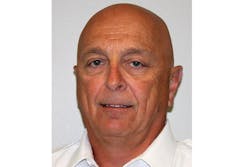FDSOA Director Speaks His Mind on Responder Safety Podcast
Chief Rich Marinucci, Executive Director of the Fire Department Safety Officers Association, is the guest on episode 3 of the ResponderSafety.com podcast.
Chief Marinucci’s 30 years in fire service leadership spans departments, professional organizations as president of the International Association of Fire Chiefs, the federal government as acting chief operating officer of the US Fire Administration, and nonprofits as national program manager for the National Fallen Firefighters Foundation Everyone Goes Home program.
On the podcast, Chief Marinucci talks about how institutions must support firefighters so they have long and healthy careers with a rewarding retirement, professional development for safety officers, how firefighters build competence as the job responsibilities and hazards change, and how the concept of “continuous improvement” can be applied to emergency response.
“One of the things I’ve learned in my travels over the years across this country is that any fire chief that suffers a line of duty death of one of their members is devastated by that. And then it weighs on their mind until the day they die. And if you want to be a leader, your goal should be to make sure that everybody leaves this job as healthy as they possibly can. And so once we know that there’s a risk in part of this job, and we know there are things that we can do to minimize those risks, it’s up to the leadership to take the initiative and make sure that becomes part of their department culture.”
— Chief Rich Marinucci on the ResponderSafety.com podcast
The podcast spotlights how the fire service is changing. Statistics demonstrate that firefighters respond to approximately 3 times as many incidents on roadway properties as structure fire calls. No longer are vehicle fires all gasoline-powered vehicles. Today, firefighters have to understand electric vehicles, hybrid vehicles, hydrogen vehicles, LPG vehicles, and LNG and CNG vehicles and how to suppress the fire in each of these types, and what hazards to look for during the response. Firefighters are seeing more and more calls for natural disaster assistance that require special skills — technical rescue, swift water, trench rescue, high voltage electric, and more. Structure fires burn hotter and develop differently due to modern construction methods, materials, and furnishings.
All these factors require the fire service to continually assess their community’s needs and the hazards they are exposed to at the types of runs they make then reconfigure their training to address those needs and hazards.
Chief Marinucci particularly emphasizes the hazards of working roadway incident scenes because there are so many factors outside the fire department’s control, including oncoming traffic, “D” drivers, and multi-agency response over long periods of time. He discusses creating a safe working environment on the roadway, the safety officer’s role in that effort, the responsibilities of every responder to act in safety-conscious ways, and the training and tools necessary to support safer roadway incident responses. You’ll also learn about the new Certified Traffic Incident Management Technician credential available from the FDSOA, tested to NFPA 1091: Standard for Traffic Incident Management Personnel Professional Qualifications.
ResponderSafety.com podcast episode 3 is now available on the Responder Safety Learning Network here and on all major podcast services. Subscribe to be notified when new episodes drop.
ResponderSafety.com is funded by the Federal Emergency Management Agency (U.S. Department of Homeland Security), the U.S. Department of Justice, and public/private partnerships






